 W
WA bandura is a Ukrainian, plucked string, folk instrument. It combines elements of the zither and lute and, up until the 1940s, was also often referred to by the term kobza. Early instruments had 5 to 12 strings and similar to the lute. In the 20th century, the number of strings increased initially to 31 strings (1926), then to 56 strings - 68 strings on modern 'concert' instruments (1954).
 W
WA banduryst is a person who plays the Ukrainian plucked string instrument known as the bandura.
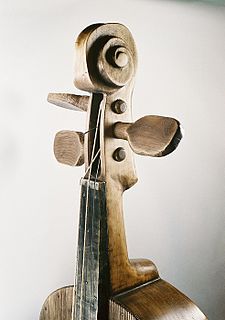 W
WThe basolia is a Ukrainian or Polish folk instrument of the bowed string family similar to the cello, although usually slightly larger and not as sophisticated in construction. The basolia was usually homemade and of very rough construction. Sometimes the soundboard was sewn to the body rather than glued. The strings are tuned in fifths.
 W
WThe bayan is a type of chromatic button accordion developed in Russia in the early 20th century and named after the 11th-century bard Boyan.
 W
WThis article refers to the percussive instrument. For the Philippine party-list group, see Buhay Hayaan Yumabong
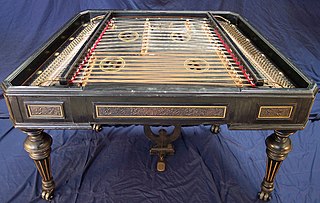 W
WThe cimbalom is a type of chordophone composed of a large, trapezoidal box with metal strings stretched across its top. It is a musical instrument commonly found in the group of Central-Eastern European nations and cultures, namely contemporary Hungary, Slovakia, Czech Republic, Serbia, Croatia, Romania, Moldova, Ukraine, Belarus, Poland, and in the traditional instrumental music of East European Jews throughout most of that territory. It is also popular in Greece and in Romani music. The cimbalom is (typically) played by striking two beaters against the strings. The steel treble strings are arranged in groups of 4 and are tuned in unison. The bass strings which are over-spun with copper, are arranged in groups of 3 and are also tuned in unison. The Hornbostel–Sachs musical instrument classification system registers the cimbalom with the number 314.122-4,5. Moreover, the instrument name “cimbalom” also denotes earlier, smaller versions of the cimbalom, and folk cimbaloms, of different tone groupings, string arrangements, and box types.
 W
WThe domra is a long-necked Belarusian, Russian, and Ukrainian folk string instrument of the lute family with a round body and three or four metal strings.
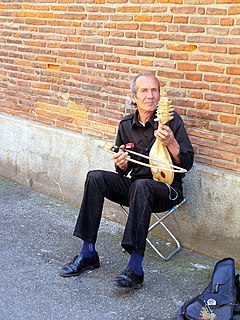 W
WThe gadulka is a traditional Bulgarian bowed string instrument. Alternate spellings are "gǎdulka", "gudulka" and "g'dulka". Its name comes from a root meaning "to make noise, hum or buzz". The gadulka is an integral part of Bulgarian traditional instrumental ensembles, commonly played in the context of dance music.
 W
WThe gudok, gudochek is an ancient Eastern Slavic string musical instrument, played with a bow.
 W
WGusli is the oldest East Slavic multi-string plucked instrument, belonging to the zither family, due to its strings being parallel to its resonance board. Its roots lie in Veliky Novgorod in Novgorodian Rus'. It may have a connection to the Byzantine form of the Greek kythare, which in turn derived from the ancient lyre, or might have been imported from Western and Central Europe during the Middle Ages, when the zither had immense popularity. It has its relatives in Europe and throughout the world: kantele in Finland, kannel in Estonia, kanklės in Lithuania, kokles in Latvia, Zither in Germany, citera in Czechia, psalterium in France and so on... Furthermore, the kanun has been found in Arabic countries, and the autoharp, in the United States. It is also related to such ancient instruments as Chinese gu zheng, which has a thousand-year history, and its Japanese relative koto. A stringed musical instrument called guslim is listed as one of the Me in ancient Sumer.
 W
WThe hammered dulcimer is a percussion-stringed instrument which consists of strings typically stretched over a trapezoidal resonant sound board. The hammered dulcimer is set before the musician, who in more traditional styles may sit cross-legged on the floor, or in a more modern style may stand or sit at a wooden support with legs. The player holds a small spoon-shaped mallet hammer in each hand to strike the strings. The Graeco-Roman dulcimer derives from the Latin dulcis (sweet) and the Greek melos (song). The dulcimer, in which the strings are beaten with small hammers, originated from the psaltery, in which the strings are plucked.
 W
WThe hurdy-gurdy is a stringed instrument that produces sound by a hand-crank-turned, rosined wheel rubbing against the strings. The wheel functions much like a violin bow, and single notes played on the instrument sound similar to those of a violin. Melodies are played on a keyboard that presses tangents—small wedges, typically made of wood—against one or more of the strings to change their pitch. Like most other acoustic stringed instruments, it has a sound board and hollow cavity to make the vibration of the strings audible.
 W
WThe kobza, also called bandurka is a Ukrainian folk music instrument of the lute family, a relative of the Central European mandora. The term kobza however, has also been applied to a number of other Eastern European instruments distinct from the Ukrainian kobza.
 W
WA Kobzar was an itinerant Ukrainian bard who sang to his own accompaniment, played on a multistringed bandura or kobza.
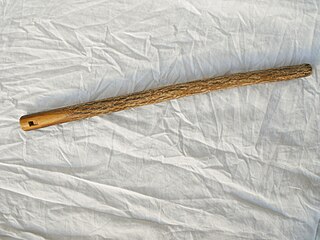 W
WKoncovka is a Slovak duct-blown overtone fipple flute without finger holes, traditionally played by shepherds. The koncovka flute is played by closing and opening the bottom hole of the flute. By increasing the air speed, two different harmonic series of notes can be played with the end either open or closed. Traditional koncovka melodies use the partial Lydian scale available on this instrument.
 W
WThe kozobas - (Byjkoza) is a bowed and percussive instrument that is popular in folk ensembles in Western Ukraine. It is a recently developed instrument and is basically a wooden pole joined to a drum at one end with a cymbal hanging from the other end. The drum membrane acts as the soundboard for one or two strings strung from the end of the pole to the end of the drum. The strings are played with a bow that occasionally hits the cymbal hanging from the other end of the pole. Recent developments include instruments with four strings tuned like those of a double bass.
 W
WThe kuvytsi are the Ukrainian and Russian variant of pan pipes. Pan pipes have been found in archeological excavations in Ukraine that date back some 5,000 years. The instrument consists of several pipes each of which, when blown endwise, produces one sound. Various versions of the kuvytsi exist in Ukraine, such as the one-sided kuvytsi, which consist of a system of pipes from great to small in one lode or two-sided kuvytsi, which have their greatest pipe in the center.
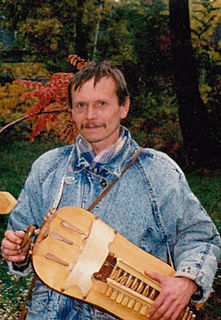 W
WThe lira, or relia, is a Ukrainian variant of the hurdy-gurdy, an instrument which can trace its history back to the 10th century. Regarding the origins of the lira in the region there are two schools of thought:The lira is an evolution of the medieval bowed lira of the Byzantine Empire, ancestor of most European bowed instruments. The Byzantine lira was possibly introduced into Ukraine through the various trade routes to Byzantium. The lira was introduced into Ukraine in the 17th century by Cossacks who had fought in France as mercenary soldiers.
A mandolin is a stringed musical instrument in the lute family and is generally plucked with a plectrum. It most commonly has four courses of doubled metal strings tuned in unison, thus giving a total of 8 strings, although five and six course versions also exist. The courses are typically tuned in a interval of perfect fifths, with the same tuning as a violin. Also like the violin, it is the soprano member of a family that includes the mandola, octave mandolin, mandocello and mandobass.
 W
WA pan flute is a musical instrument based on the principle of the closed tube, consisting of multiple pipes of gradually increasing length. Multiple varieties of pan flutes have been popular as folk instruments. The pipes are typically made from bamboo, giant cane, or local reeds. Other materials include wood, plastic, metal and ivory.
 W
WSopilka is a name applied to a variety of woodwind instruments of the flute family used by Ukrainian folk instrumentalists. Sopilka most commonly refers to a fife made of a variety of materials and has six to ten finger holes. The term is also used to describe a related set of folk instruments similar to recorder, incorporating a fipple and having a constricted end.
 W
WThe tambourine is a musical instrument in the percussion family consisting of a frame, often of wood or plastic, with pairs of small metal jingles, called "zills". Classically the term tambourine denotes an instrument with a drumhead, though some variants may not have a head at all. Tambourines are often used with regular percussion sets. They can be mounted, for example on a stand as part of a drum kit, or they can be held in the hand and played by tapping or hitting the instrument.
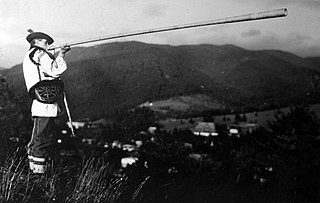 W
WThe trembita or trombita is an alpine horn made of wood. It is common among Ukrainian highlanders Hutsuls who used to live in western Ukraine, eastern Poland, Slovakia and northern Romania. In southern Poland it's called trombita, bazuna in the north and ligawka in central Poland.
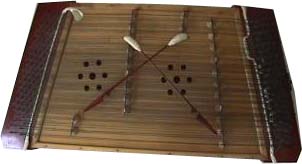 W
WThe tsymbaly is the Ukrainian version of the hammer dulcimer. It is a chordophone made up of a trapezoidal box with metal strings strung across it. The tsymbaly is played by striking two beaters against the strings.
 W
WUkrainian folk music includes a number of varieties of traditional, folkloric, folk-inspired popular and folk-inspired classical traditions.
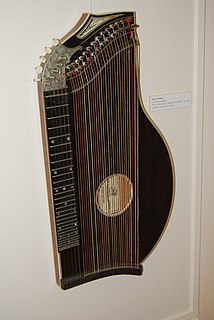 W
WZither is a class of stringed instruments.